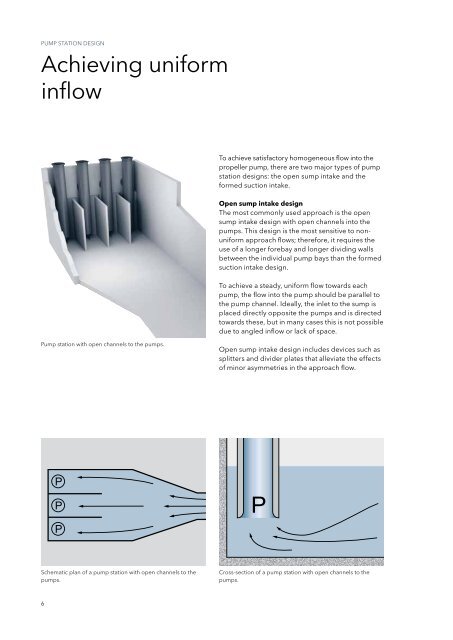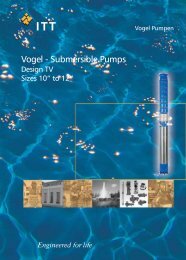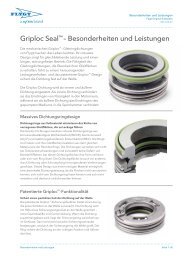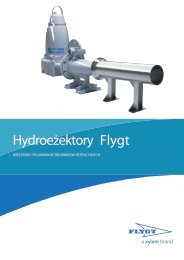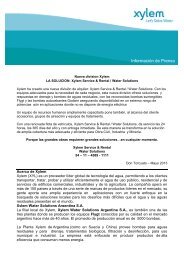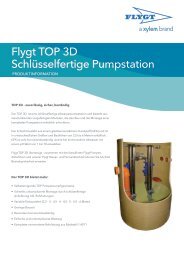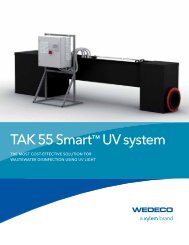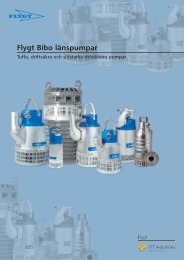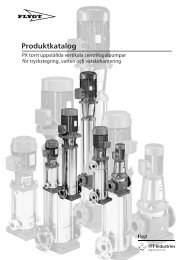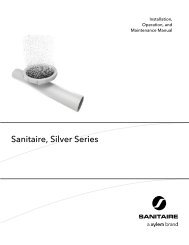Formed suction intake - Flygt
Formed suction intake - Flygt
Formed suction intake - Flygt
You also want an ePaper? Increase the reach of your titles
YUMPU automatically turns print PDFs into web optimized ePapers that Google loves.
Pump station design<br />
Achieving uniform<br />
inflow<br />
To achieve satisfactory homogeneous flow into the<br />
propeller pump, there are two major types of pump<br />
station designs: the open sump <strong>intake</strong> and the<br />
formed <strong>suction</strong> <strong>intake</strong>.<br />
Open sump <strong>intake</strong> design<br />
The most commonly used approach is the open<br />
sump <strong>intake</strong> design with open channels into the<br />
pumps. This design is the most sensitive to nonuniform<br />
approach flows; therefore, it requires the<br />
use of a longer forebay and longer dividing walls<br />
between the individual pump bays than the formed<br />
<strong>suction</strong> <strong>intake</strong> design.<br />
To achieve a steady, uniform flow towards each<br />
pump, the flow into the pump should be parallel to<br />
the pump channel. Ideally, the inlet to the sump is<br />
placed directly opposite the pumps and is directed<br />
towards these, but in many cases this is not possible<br />
due to angled inflow or lack of space.<br />
Pump station with open channels to the pumps.<br />
Open sump <strong>intake</strong> design includes devices such as<br />
splitters and divider plates that alleviate the effects<br />
of minor asymmetries in the approach flow.<br />
Schematic plan of a pump station with open channels to the<br />
pumps.<br />
Cross-section of a pump station with open channels to the<br />
pumps.<br />
6


